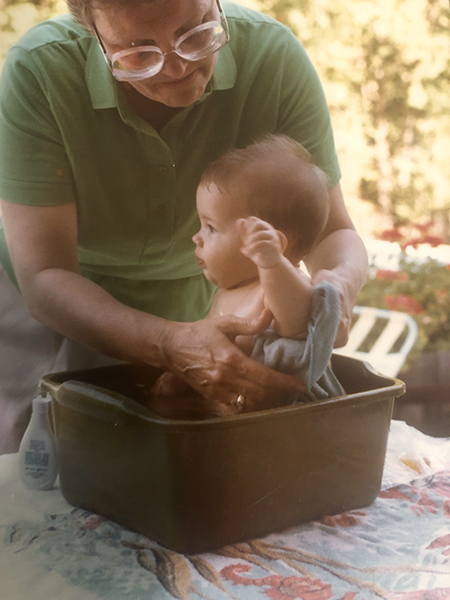
In the early 80’s, the Diocese of Kansas adopted the new Book of Common Prayer and stopped using the 1928 edition. My grandparents decided to take the 1928 prayer books from Grace Cathedral in Topeka, Kansas and transform my grandfather’s physical therapy office waiting room into a Chapel for every Sunday service. After some time, my grandfather attended seminary and was ordained to be an Anglican priest for his congregation. He also built a chapel in the basement of his office building for Wednesday’s evening Eucharist. In the summer, this is the service I attended on a weekly basis. Both my grandfather, as the presider of the service and my grandmother, as a congregant, had a rhythm and cadence in this liturgy.
When I first attended the 8:00 am 1928 Eucharist service here at Christ Church, the cadence of my grandparents saying these same words came into my head and were indeed hard to shake. The emphasis and inflection that they put on certain words or phrases was different than how it is spoken in our Christ Church congregation today. I could lose myself in following all the possibilities as to why that is. Is it the difference between how people speak in Kansas versus Georgia? Is it a difference in time from what came before the 80’s? Is it a difference in the education of a priest? Is it a factor of some or all of these possibilities?
Brown later reflects in her poem about finding the word of God in a grandmother’s smile, that she learned how to pray from her great grandmother, who had a prayer circle in her living room with other women. Reflecting that God’s ears are open to all his children, wherever they are.
My grandmother is the first Episcopalian in our recent family tree. She grew up not attending church at all. At the age of sixteen, she walked by a Roman Catholic church on her way home from school every day, and one day she heard singing and saw the stained glass windows and wanted to start attending worship there. Her mother asked her to consider the Episcopal Church instead. So she started to attend. My grandfather, growing up in rural Kansas, attended the Congregational Church that was nearest his family farm. When he met my grandmother, she informed him they would be married in the Episcopal church, and he was baptized a few days before their wedding. After my grandfather died, my grandmother started attending the church where I was the part time youth minister - an Episcopal Church in Overland Park, Kansas. I sat with her on Sunday mornings, as she recited the 1979 prayer book in her 1928 cadence - she was the only one that had that sort of hum in reciting the liturgy.
My grandmother, late in her life, told me that her goals were to receive communion from my older sister (who was in seminary at the time,) and to see me married. She also had plans to finally become a member of the Roman Catholic Church, but she was waiting to receive communion from my sister, since she knew it would be strongly discouraged, once she was received into the Catholic church. When she passed away a month before Taylor and I were engaged and a year before my sister was ordained, I realized how close her family and her faith were to her heart. That the liturgy gave my grandmother a rhythm to follow which she in turn nurtured the needs of her family with. I do believe that she achieved her final goals, because I believe in the Resurrection and eternal life through Jesus Christ. I also know that through her I have heard the word of God several times, ingrained in me, like a rhythm.
*Brown, Amena. She said, “How do you know when you are hearing from God?” A Rhythm of Prayer (p. 7).
The Crown Publishing Group. Kindle Edition.
Listen to this spoken poem HERE.
